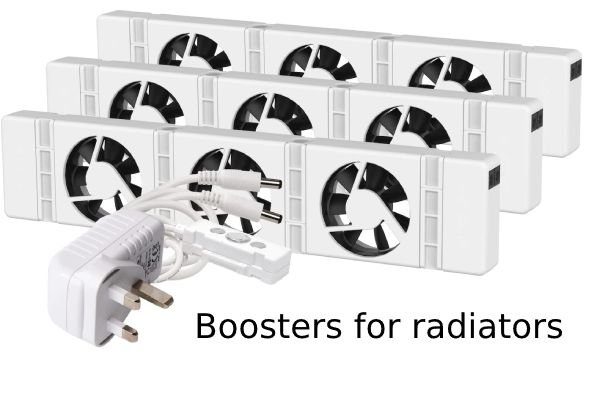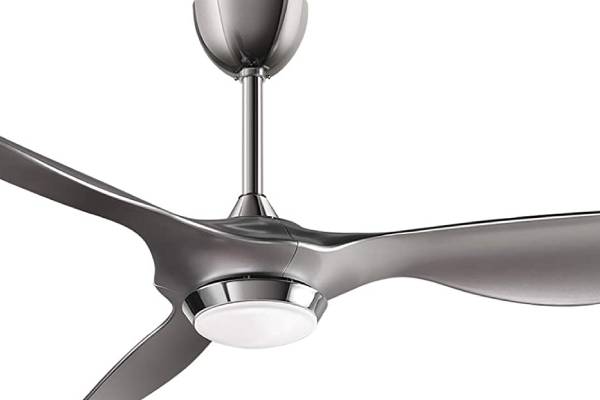Are electric radiator fans worth it?
Radiator fans, also known as radiator boosters, are designed to help increase the efficiency of a central heating system by circulating the warm air produced by the radiator around the room. These fans work by drawing in cold air from the floor and pushing it up over the radiator, causing the warm air to circulate around the room more quickly.
Whether or not a radiator fan is “good” depends on your specific needs and situation. Here are some potential benefits and drawbacks to consider:
Benefits:
- Increased efficiency: Radiator fans can help to circulate warm air more effectively around a room, which may result in a more even distribution of heat and potentially reduce your overall energy consumption.
- Cost-effective: Compared to installing a whole new heating system, a radiator fan can be a relatively inexpensive way to improve the performance of your current setup.
- Easy to install: Most radiator fans can be easily installed without the need for professional help.
Drawbacks:
- Noise: Some radiator fans can be quite loud when in operation, which may be a distraction or annoyance in certain situations.
- Limited effectiveness: Radiator fans may not be effective in every situation. For example, if your radiator is positioned in a corner or against a wall, there may not be enough space for the fan to draw in cold air and circulate warm air effectively.
- Additional maintenance: Like any mechanical device, a radiator fan may require occasional maintenance or cleaning to ensure optimal performance.
Ultimately, whether or not a radiator fan is a good choice for you will depend on your specific heating needs and the layout of your home. It may be worth experimenting with a radiator fan to see if it helps improve the comfort level and energy efficiency of your home.
Is it better to have a radiator fan push or pull?
In general, a push setup is typically more effective when the radiator is situated near an external wall or in a corner. In this case, the fan would be installed on the side of the radiator facing the room and would push warm air out into the space.
On the other hand, a pull setup may be more effective when the radiator is situated away from the external walls or in a more open space. In this case, the fan would be installed on the opposite side of the radiator and would pull cool air in from the room and push it up over the radiator, causing the warm air to circulate around the space more effectively.
Would radiator fans save money?
Radiator fans can potentially save money on heating costs in the UK by increasing the efficiency of a central heating system. By helping to circulate warm air around a room more effectively, a radiator fan can help to maintain a more consistent temperature and potentially reduce the amount of energy needed to keep a space warm. However, the actual savings will depend on several factors, including the size of the room, the type of heating system, the existing insulation and draft-proofing of the space, and the cost of electricity in the area. In some cases, the cost of running a radiator fan may outweigh the savings in energy costs.
Is it okay to run radiator fan all the time?
Running a radiator fan all the time is generally not necessary and may not be cost-effective in terms of energy consumption. Radiator fans are designed to help circulate warm air around a room more effectively, but they should only be used when the heating system is actively running.
If you run the radiator fan all the time, it may result in unnecessary energy consumption and higher electricity bills. Additionally, the constant operation of the fan may lead to increased wear and tear on the device, potentially reducing its lifespan.
Selection of the best fan radiator boosters
SpeedComfort Starter
The SpeedComfort Starter kit provides small and quiet fans that give a faint breeze through the radiator, helping to warm a room faster and keep it warm for longer. The kit comes with a temperature sensor that turns the fans on when the radiator is warm, but the fans may stay on permanently even when the radiator is cold. The kit is more expensive than other options and may not be necessary for small rooms or when using a basic desk fan pointed behind a radiator. However, the low power consumption and quiet operation may make it a good option for some users. The kit may require additional adapters for certain types of radiators, and the instructions are not very clear. Overall, the SpeedComfort Starter kit may be a good option for those looking to improve the heating in their home, but the price may be a limiting factor for some.
For a living room that measures 5 meters in width, 8 meters in length, and 3 meters in height, the total capacity is 120 cubic meters. To effectively circulate warm air in this space, a Trio set with an Extension set or two Duo sets would be required. On the other hand, a single SpeedComfort (Monoset) is usually sufficient for a bedroom.
Pros
✅ Small and quiet fans
✅ No set up required
✅ Energy efficient, with a power draw of approximately 0.7w
✅ Can be mounted magnetically
✅ Temperature sensor
Cons
❌ Slightly too expensive
❌ May not be effective for large rooms or large radiators
❌ Temperature sensor not always work

SpeedComfort Starter
- Moves up to 30 m2 of air per hour
- Power: 0.55 Watts
- Noise: 20dB
- Temperature sensor
- Weight: 570g
- Power source: Gas Powered
- Dimensions: 39.79 x 8.9 x 8.7 cm
Conclusion
Radiator fan boosters can be a cost-effective and energy-efficient solution for improving heating efficiency in homes. They work by circulating warm air more effectively around a room, reducing the amount of energy needed to maintain a comfortable temperature. Radiator fans can also help reduce heat loss through pipes and enable lower boiler temperatures. However, the effectiveness of radiator fans may depend on several factors, including the size of the room, type of heating system, existing insulation, and draft-proofing of the space.
Last update on 2024-04-30 / Affiliate links / Images from Amazon Product Advertising API







